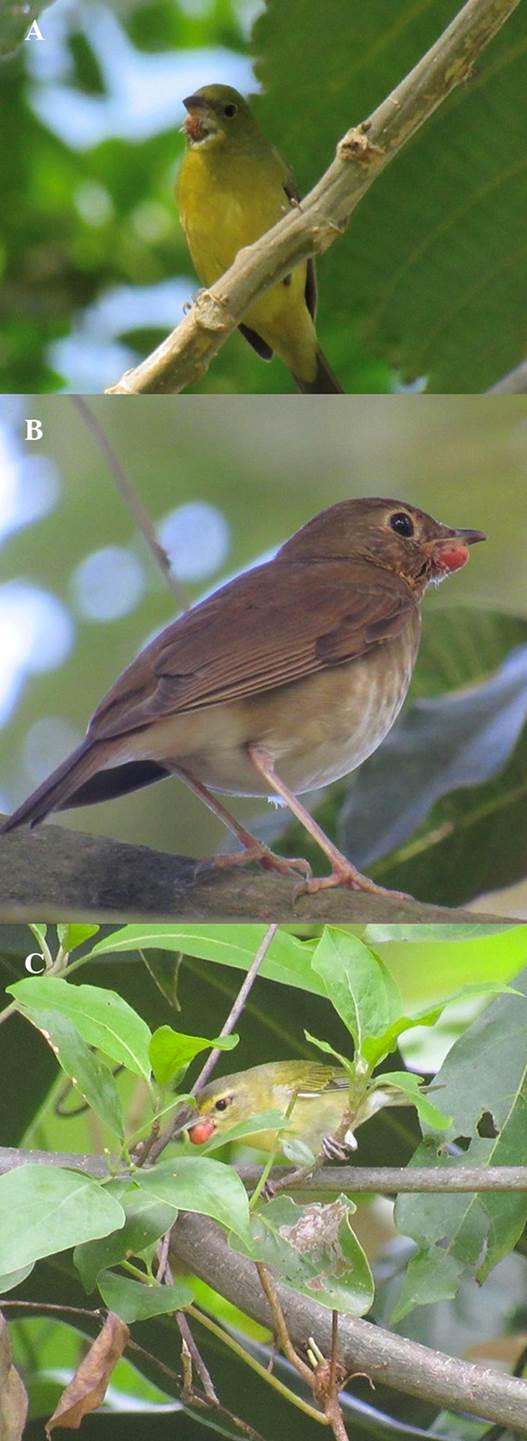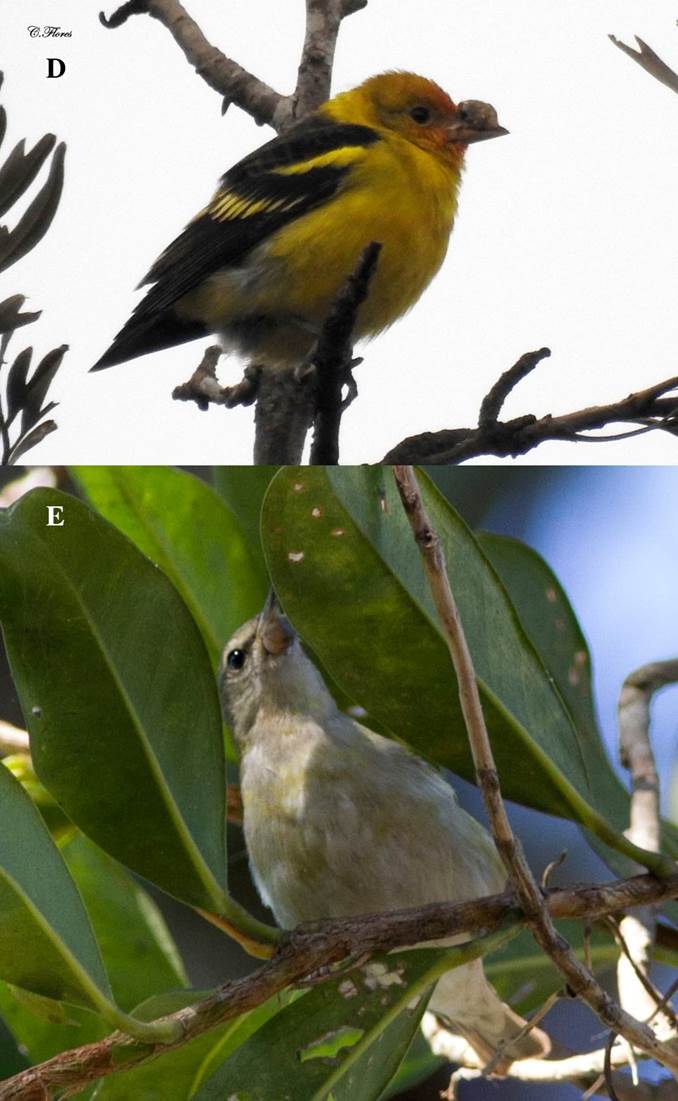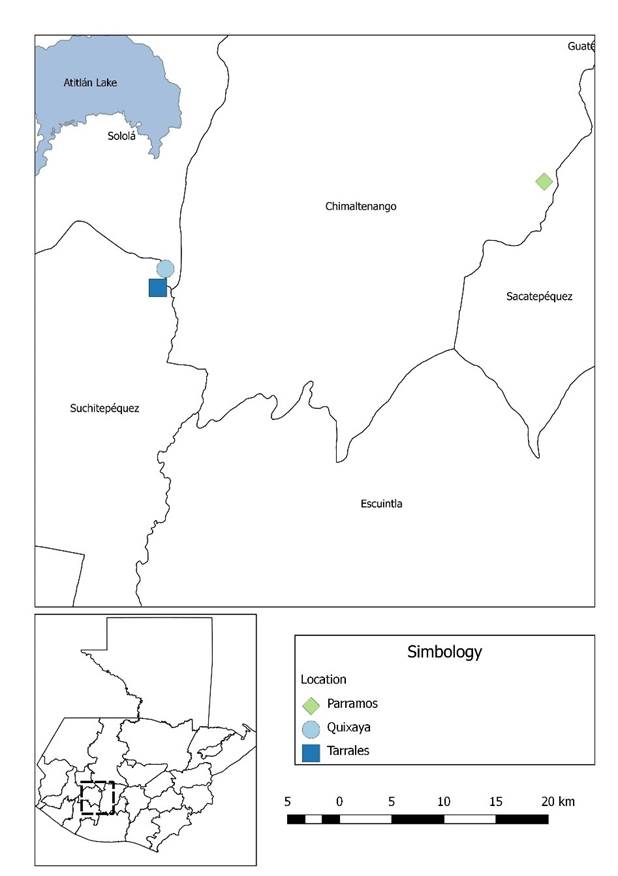Introduction
There are several factors that threaten biodiversity including loss of habitat and overexploitation of species (Primack 2014). One of the main threats to planet's biodiversity is Global Climate Change-GCC (IPCC 2007), which interacts synergistically with other threats that affect the biodiversity exacerbating their negative effects (Galdames et al. 2018). A primary concern for wild species and their ecosystems is the rapid rate of change because species are not able to respond to climatic variations as they did throughout their evolutionary history (Root et al. 2003).
One of the axis on which GCC impacts biodiversity are wildlife diseases. As climate change impacts the world some environments are becoming more suitable for the incidence of pathogens due to more favorable temperatures for their expression and effect (Pounds and Puschendorf 2004, Pounds et al. 2006). Finally, the spread of infectious pathogens to new ecosystems and host species is a worldwide threat to biodiversity and public health (Zylberberg et al. 2012).
Guatemala is located in northern Central America (Figure 1), where there are a variety of microclimates because of its geographical location, physiography and altitudinal variation. This unique setting has resulted in a large number of species of flora and fauna, including a high level of endemism. As a result, Guatemala is considered one of the most important countries in Mesoamerica for the conservation of biodiversity (IARNA 2003). One of the groups with high diversity in Guatemala are birds with 724 species of birds, 486 of these species breed in the country (including nine visitor species) and 225 are non-breeding species (includes migratory species and 29 transient species), and 13 species with unknown state of reproduction (Eisermann and Avendaño 2006).
Despite its importance, Guatemala's biodiversity suffers from strong pressures and threats such as loss, deterioration and fragmentation of the habitat. In addition, some other factors affecting the biodiversity of Guatemala are poorly known (e.g. diseases), but their impact can be very serious. Viruses such as poxviruses, papillomaviruses, and herpesviruses can cause dermatological injuries, mainly in susceptible young birds. The disease can be acute or chronic depending on age and bird species (Harrison et al. 1994). Poxviruses cause skin lesions such as nodules in featherless areas of some species (Harrison et al. 1994). These lesions give rise to secondary infections by bacteria and fungi that produce ulcers, conjunctivitis and keratitis, affecting vision and therefore influencing the feeding capacity of affected birds (Harrison et al. 1994). Avian pox virus is a pathogen implicated as a major factor in avian declines and extinctions in Hawaii (Zylberberg et al. 2012). Global climate change and its effect on infectious pathogens and their incidence, distribution and, impact on wildlife are virtually unknown in Guatemala with some exceptions (Girón 2008).
Methods
We made casual observations of birds at several locations in Guatemala, mainly at the private natural reserve Los Tarrales, Patulul, Suchitepéquez (14º52’32” N-91º14’02”O), Santa Cruz Quixayá, San Lucas Tolimán, Sololá (14º54’34“N-91º13’38”O) and Parramos, Chimaltenango (15º01’44”N-91º20’32”O) (Figure 1). Casual or incidental observations are those made incidentally, while doing another activity, thus no time or distance/area components are classified (eBird 2019). On January 19th, 2019, one of us (AT) made a stationary count during 2.5 hours (1430h-1700h) in Santa Cruz Quixayá. The other observations were casual and conducted during January and February 2019. San Lucas Tolimán is one of 12 communities found at the Atitlán lake border. The lake has a very high biodiversity importance and it is one of the main ecotourism destinations in Guatemala.
Results
Individuals of eight species presented macroscopic lesions suspicious of avian pox (Figure 2) or some type of tumor on their head at the three locations in Guatemala. Initially, individuals of four migratory species: Painted Bunting (Passerina ciris: Cardinalidae, Figure 2A), Swainson’s Thrush (Catharus ustulatus: Turdidae, Figure 2B), Rose-breasted Grossbeak (Pheucticus ludovicianus: Cardinalidae) and Tennessee Warbler (Oreothlypis peregrina: Parulidae, Figure 2C), as well as individuals of three resident species: Blue-gray Tanager (Thraupis episcopus: Thraupidae) Red-legged Honeycreeper (Cyanerpes cyaneus: Thraupidae) and Yellow-crowned Euphonia (Euphonia luteicapilla: Fringillidae) were observed having notorious lesions from the featherless areas of their faces at Quixayá. A Western Tanager (Piranga ludoviciana: Cardinalidae, Figure 2D) was observed on 29 January 2019 at Parramos at approximately 36 km straight line from Quixayá. A Tennessee warbler (Figure 2E) with a similar affection was observed on 02 February 2019 at Los Tarrales private reserve, just 1 km in straight line from the first location at Quixayá. The lesions look visually similar to avian poxvirus lesions observed in other bird species, but they could also be some type of malignant tumor. None of these individuals with lesions on their heads were captured; therefore, a definite diagnosis could not be established. To our knowledge, these types of injuries have not been previously reported in wild birds in Guatemala.

Figures 2A, 2B, 2C Birds with macroscopic lesions suspicious of a cutaneous form of avian pox. A: Passerina ciris in Quixayá. B: Catharus ustulatus in Quixayá C: Oreothlypis peregrina. in Quixayá (photos: Andres Tzunun 19/01/2019).

Figures 2D, 2E D: Piranga ludoviciana nodules resembling a viral infection similar to avian poxvirus in Parramos, Chimaltenango, Guatemala (photo: Carlos Flores 29/01/2019). E: Oreothlypis peregrina in private natural reserve Los Tarrales, Patulul, Suchitepéquez (photo: Callie Gesmundo 2/02/2019).
We counted sixty-three individuals of 17 species in the three locations. Fourteen of the observed birds were infected; four of these belonged to three resident species and ten to five migratory species (Table 1).
Table 1 Number of individuals of migratory (M) and resident (R) bird species observed (O) and number of birds infected (I) counted on three locations (Santa Cruz Quixayá, San Lucas Tolimán, Sololá; Parramos, Chimaltenango and private natural reserve Los Tarrales, Patulul, Suchitepéquez).
| Common name | Scientific name | Number | Status | |
|---|---|---|---|---|
| O | I | |||
| White-collared Swift | Streptoprocne zonaris | 10 | 0 | R |
| Red-legged Honeycreeper | Cyanerpes cyaneus | 8 | 2 | R |
| Clay-colored Thrush | Turdus grayi | 6 | 0 | R |
| Yellow-winged Tanager | Thraupis abbas | 6 | 0 | R |
| Yellow-crowned Euphonia | Euphonia luteicapilla | 5 | 1 | R |
| Melodious Blackbird | Dives dives | 4 | 0 | R |
| Painted Bunting | Passerina ciris | 5 | 6 | M |
| Rose-breasted Grossbeak | Pheucticus ludovicianus | 3 | 1 | M |
| Blue-gray Tanager | Thraupis episcopus | 2 | 1 | R |
| Yellow Warbler | Setophaga petechial | 2 | 0 | M |
| Grey Hawk | Buteo plagiatus | 2 | 0 | R |
| Common Tody-flycatcher | Todirostrum cinereum | 2 | 0 | R |
| Ruby-throated Hummingbird | Archilochus colubris | 2 | 0 | M |
| Northern Waterthrush | Parkesia noveboracensis | 1 | 0 | M |
| Swainson’s Thrush | Catharus ustulatus | 2 | 1 | M |
| Tennessee Warbler | Oreothlypis peregrina | 2 | 1 | M |
| Western Tanager | Piranga ludoviciana | 1 | 1 | M |
| Total | 18 species | 63 | 14 | 8 M/9 R |
Discussion
Avian pox is a viral disease of birds caused by a member of the poxvirus family. This widespread disease is found in a large number of bird families (The Wildlife Center of Virginia 2019). Most avipoxvirus strains are species-specific; however, some have changed host at the genus, family and order barriers (Gyuranecz et al. 2013). Avian pox infection is a common viral disease that affects about 278 species of domestic and wild birds of 20 different orders worldwide (van Riper and Forrester 2007). This disease develops slowly and generally causes mild/moderate skin lesions, but sometimes it causes death. Lesions develop mostly on the featherless regions on the face, legs, and feet. However, the virus may affect the mucous membranes in the oral cavity or respiratory tract, as a result respiration can be impaired and animals would die (The Wildlife Center of Virginia 2019). Diagnosis of avian pox is first suspected based on clinical signs; however, it must be confirmed by microscopic examination of the affected tissue and preferably also by molecular sequencing (The Wildlife Center of Virginia 2019).
This virus is highly contagious, so researchers have to be extremely meticulous when working with these individuals to avoid infecting other birds. This is particularly true for researchers who are working with mist nets to catch birds. Resident birds may be infected but not present physical symptoms, but the immunological system of migratory birds may be different and therefore may manifest symptoms, such as those observed in the present report. Direct contact between infected and susceptible birds and exposure to contaminated objects (fomites) are also potential sources of infection in domestic and free-ranging birds (Godoy et al. 2013). Aerosol transmission has also been reported although it is less common (Mete et al. 2001). The lifestyle of wild birds can allow the spread and infection of avian pox among populations and also to novel species through species introductions, habitat change and bird migration (Gyuranesc et al. 2013).
To our knowledge this is the first record of facial signs of diseases that resemble avian pox on birds in Guatemala. The conservation implications of the possible presence of avian pox in several bird species in Guatemala need appropriate attention. Also to our knowledge, Cyanerpes cyaneus, Euphonia luteicapilla, Passerina ciris, Pheucticus ludovicianus have not been previously reported as hosts of avian poxvirus, at least of the genus Avipoxvirus, so clinical confirmation is required. This also would be the case of Catharus ustulatus and Oreothlypis peregrina and probably Piranga ludoviciana (Bolte et al. 1999). For this last species, the color and aspect of the observed wounds appeared different (Figure 2D) from those observed in the other birds. It is possible for the blister to burst and release the virus, and then the tissue heals and remains in the observed state. In the case of Thraupis episcopus, it was already reported as a host of avian poxvirus in Panama (Kirmse and Loften 1969).
At this moment we are presenting a research project to investigate this situation to have a diagnosis and collect some additional information such as incidence rate. It is imperative to determine the kind of illness the birds are suffering in order to take the necessary actions. Although avian pox is generally self-limiting, it has proven to be a disease of concern in ecosystems where species have had little or no prior exposure to it (Van Riper et al. 2002). The scientific community should be alert about the situation in Guatemala where this disease could have unsuspected consequences for the avifauna, both migratory and resident species.











 nova página do texto(beta)
nova página do texto(beta)




